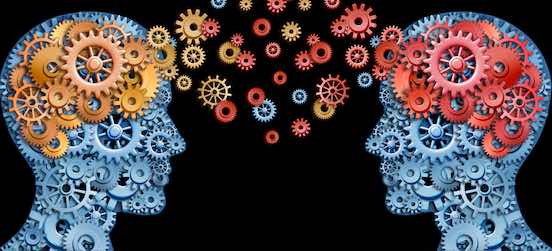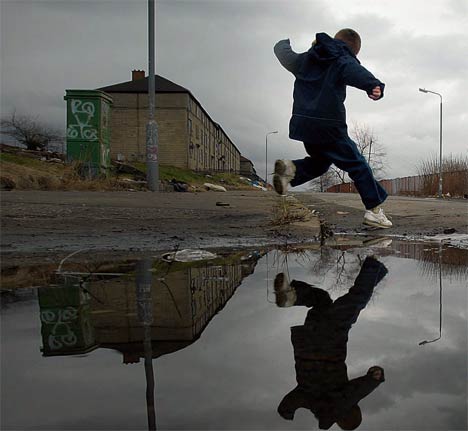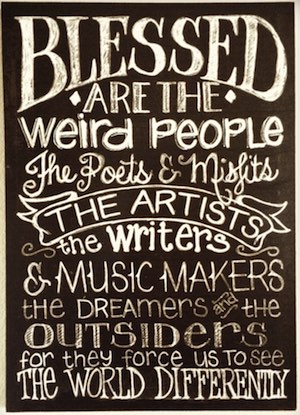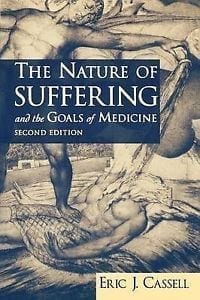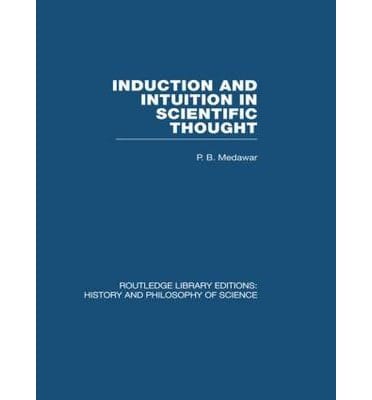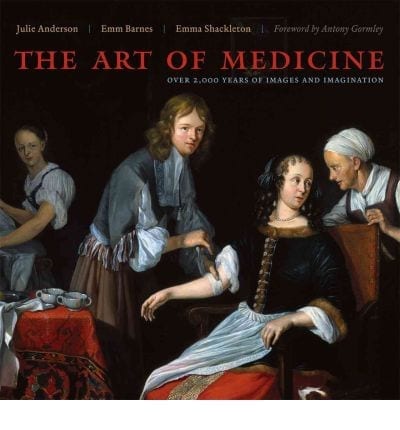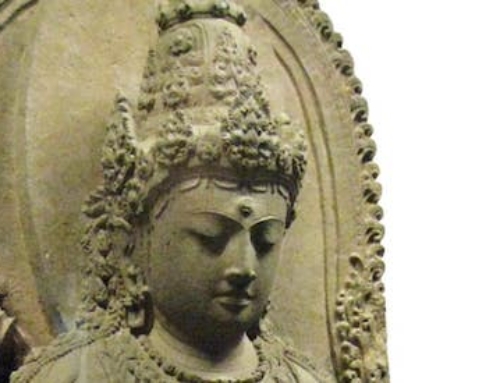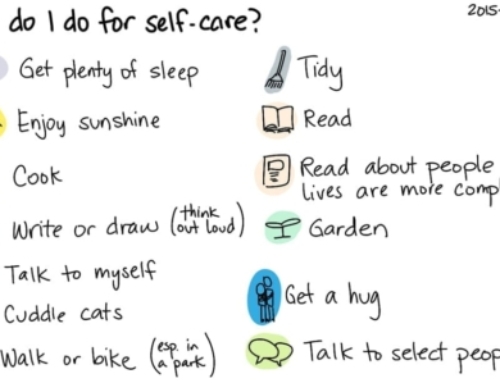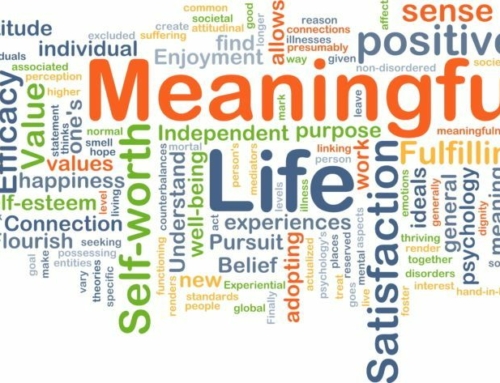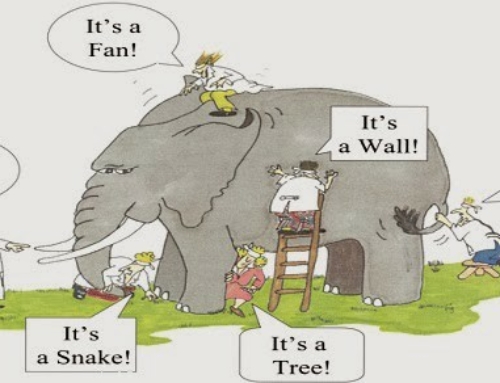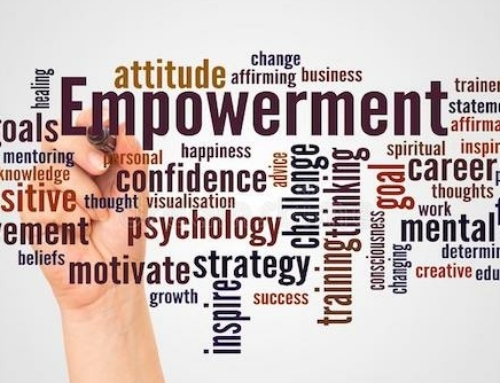Intuitive Dimension
Dr William House, 2016
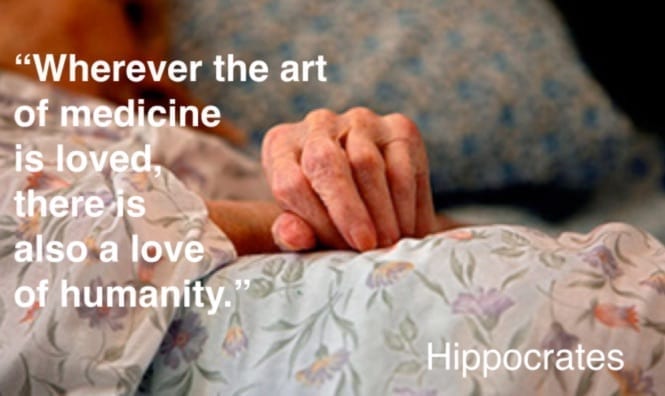
The art of medicine balances medical science and their marriage becomes holistic practice. Each is weak and perhaps harmful without the other. An important part of the art of medicine is being intuitive or having a feeling in the gut or in the heart, and knowing how to trust it. Just as an artist must learn how to trust their own creative responses but this will come to nothing without the knowledge and skills of their craft.
Intuition and Imagination
A Fragment of a Possible World
Imagining a fragment of a possible world,
The fruits of being intuitive,
Of playing around the puddles.
But to talk of creativity and imagination
seems slightly disreputable
in the rarified world
of the academy,
and the comfort of the clinic.
Scientists are usually too proud or too shy to speak about creativity and ‘creative imagination’; they feel it to be incompatible with their conception of themselves as ‘men of facts’ and rigorous inductive judgments. The role of creativity has always been acknowledged by inventors, because inventors are often simple unpretentious people who do not give themselves airs, whose education has not been dignified by courses on scientific method. Inventors speak unaffectedly about brain waves and inspirations: and what, after all, is a mechanical invention if not a solid hypothesis, the literal embodiment of a belief or opinion of which mechanical working is the test?
Intuition takes many different forms in science and mathematics, though all forms of it have certain properties in common: suddenness of their origin, the wholeness of the conception they embody, and the absence of conscious premeditation…. [such as] thinking up or hitting on a hypothesis from which whatever we may wish to explain will follow logically. This is a generative act…the invention of a fragment of a possible world. ‘Creativity’ is a vague word, but it is just such a context as this that we should choose to use it.”
Peter.B. Medawer (Nobel Prize-winning biologist) Induction and Intuition in Scientific Thought, London, Methuen 1969 p55-6]
Can you invent a fragment of a possible world in response to the photograph of the boy and the puddle and the terraced homes? Try writing a few words or sentences about his life.
Maybe this image will help to loosen up your inhibitions….
The Art of Medicine
Perhaps intuitive insights call upon tacit knowledge? Knowledge that is difficult to write down, visualise or transfer from one person to another. This sort of knowledge is easily overshadowed by knowledge that can be written down, visualised or transferred from one person to another.
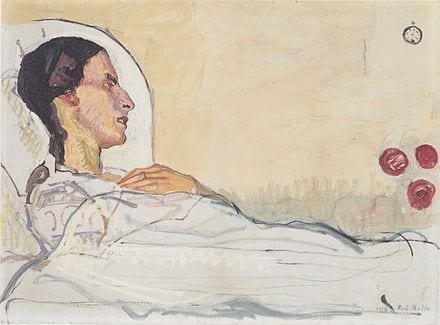
Ferdinand Hodler
Valentine Godé-Darel on Her Sick bed, 1914, Oil on Canvas
What do you see?
Traditionally the practice of medicine has been divided into its science, concerned with disease, and its art, associated with the actual care of patients. As in many a tense marriage, arguments have been advanced about the differences, similarities, and mutual need of each of these aspects for the other. In these discussions, when the concern is that the needs of the sick are being overlooked in modern scientific medicine, the importance of empathy, compassion, communication, and other humane qualities of physicians are stressed. When its protagonists fear that science is getting short shrift, they point out the impossibility of understanding the processes of disease in the absence of science, and they demonstrate the superior precision of thought brought to clinical medicine by the biological and physical sciences….
I believe that to resolve the problem of art versus science in medicine, we must understand that the truly successful clinician must respect both aspects. Knowledge, whether of science or compassion, does not do things to patients – clinicians do. This is the corollary of the truism that doctors do not treat diseases, they treat patients. The disputation between art and science in medicine merely reflects a world that has been chopped up into artificial pieces. There are no diseases that exist outside of sick persons, there are no patients without doctors, and there are no clinicians without patients. The situation is like the story of King Solomon and the two women who claimed the same child. If the child had been divided in two, each woman would have had a piece – but there would be no child. Dividing up clinical medicine by reducing it to one or another of its aspects may satisfy the disputants, but then the thing that most people mean when they speak about medicine disappears.
Eric Cassell, The Nature of Suffering and the Goals of Medicine OUP 1991 ch12
Later in Chapter 12, Cassell discusses the way experience mediates between science and art. The crucial skill here is ‘attentive listening’ in which the physician hears what the patient says before beginning to interpret what they might mean. This entails hearing the actual words and phrases.
Dr. Eric Cassell speaks with Dr. Susan Massad from the East Side Institute on “what does philosophy have to do with our health?”
Cassell is emphasizing the relationship of subject to experience: the immediacy of experience which is often too overwhelming for us to cope with so we hang that experience in the old wardrobe of our mind and perhaps give it a medical label. So the richness is lost, or almost lost. Until perhaps it is awakened by a new experience that has resonance for something, somewhere in the past. This resonance is between one unique experience and another, a recognition without necessarily being able to recall the details of the past event. Some sort of essence remains. At its best, art celebrates this essence for its ability to touch the universal. It gives form to the formless through resonance.
A useful option for the practitioner to help with listening and retrieval is to jot down verbatim sentences as the patient speaks. Practising mindfulness should also help with this. Or if you are a poet you may be able to capture the power of direct experience. Cassell quotes (also in Ch12) from a poem by Rupert Brooke, The Great Lover.
These I have loved:
White plates and cups, clean-gleaming,
Ringed with blue lines; and feathery, faery dust;
Wet roofs, beneath the lamp-light; the strong crust
Of friendly bread; and many-tasting food;
Rainbows; and the blue bitter smoke of wood;
And radiant raindrops couching in cool flowers;
And flowers themselves, that sway through sunny hours,
Dreaming of moths that drink them under the moon;
Then, the cool kindliness of sheets, that soon
Smooth away trouble; and the rough male kiss
Of blankets; grainy wood; live hair that is
Shining and free; blue-massing clouds; the keen
Unpassioned beauty of a great machine;
The benison of hot water; furs to touch;
The good smell of old clothes; and others such –
The comfortable smell of friendly fingers,
Hair’s fragrance, and the musty reek that lingers
About dead leaves and last year’s ferns…Rupert Brooke, The Great Lover
Seven Ways to be more intuitive:
- Listen to your inner voice:
This inner voice maybe thoughts, and it may be sensations from your body, especially the gut. It is very valuable to get to know how your body and your mind give you signals. Learn to decode them. Be particularly vigilant during the first hour after you wake in the morning for both positive and negative thought and body messages. - Spend time alone:
Time alone and away from noise and distraction makes being intuitive easier. Exhaustion and stress makes it harder. - Be creative:
Spend time making things or writing or whatever you can do creatively. The problem-solving, especially the need to improvise, helps to release your intuitive voice. - Be mindful:
Practising mindfulness has become very popular. It gives you skills that help to avoid being distracted or upset by unwanted thoughts. It helps you to notice your surroundings and to get things into a better perspective. - Take notice:
Noticing your surroundings helps with the vital sense of connection with the natural world and with other people. Without such connection it is hard to keep hold of our values and priorities, and of a balanced sense of who we are. - Nurture close relationships:
Without friends, most people will be a shadow of their true selves. Everything will be harder. Especially spend time with people who are nurturing for you. - Play:
It is easy to forget how to play as you get older. Doing things for fun, especially things with no other purpose helps us to find our freedom to be ourselves and escape from the pressures to conform.
We don’t stop playing because we grow old, we grow old because we stop playing
George Bernard Shaw
Resources
Don’t let the noise of others’ opinions drown out your own inner voice. And most important, have the courage to follow your heart and intuition.
Steve Jobs

